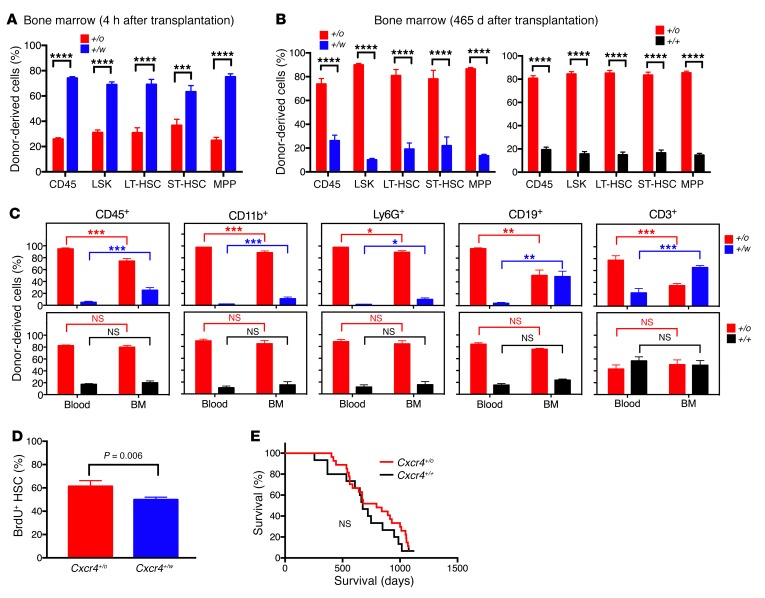Figure 2. The superiority of Cxcr4+/o BM for blood reconstitution after competitive transplantation in lethally irradiated mice involves an early HSC proliferative advantage and superior long-term engraftment, but not an HSC BM-homing advantage.
(A) Homing. Equal numbers of Cxcr4+/o and Cxcr4+/w lineage-negative BM cells were cotransplanted into lethally irradiated mice. Four hours later, the recipient BM was analyzed for donor-derived cells. (B) Long-term engraftment of HSCs and HPCs. (C) Mature leukocyte retention. Blood and BM cells of the mice in Figure 1B were analyzed on day 465 after transplantation. Data (n = 5) are the percentage (mean ± SEM) of total donor-derived cells specific for the indicated Cxcr4 genotype (abbreviated as +/o, +/+, and +/w) for the indicated HSCs and HPCs (A and B) and mature leukocytes (C) from individual experiments and are representative of 2 independent experiments in A–C. (D) HSC proliferation (see Supplemental Figure 5 for details). Data (n = 5) are the percentage (mean ± SEM) of BrdU+ HSCs for each donor from a single experiment representative of 2 independent experiments. (E) Survival. Cxcr4+/+ (n = 15) and Cxcr4+/o (n = 27) littermates were observed in specific pathogen-free conditions. Lin–, lineage-negative leukocytes; LT-HSC, long-term engrafting HSCs; ST-HSC, short-term engrafting HSCs; LSK, lin–Sca1+c-kit–; MPP, multipotent progenitors. *P < 0.05; **P < 0.01; ***P < 0.005; **** P < 0.001; NS, not significant, Student’s t test.

